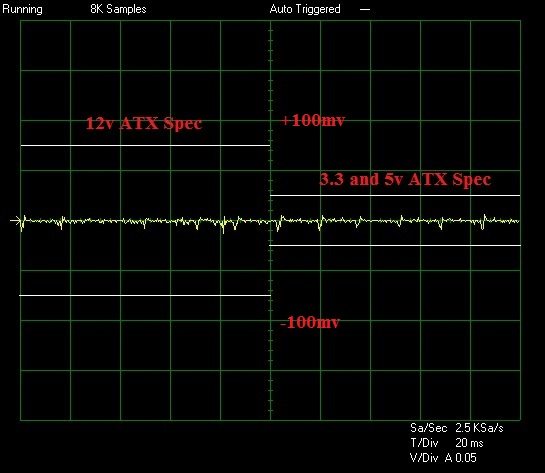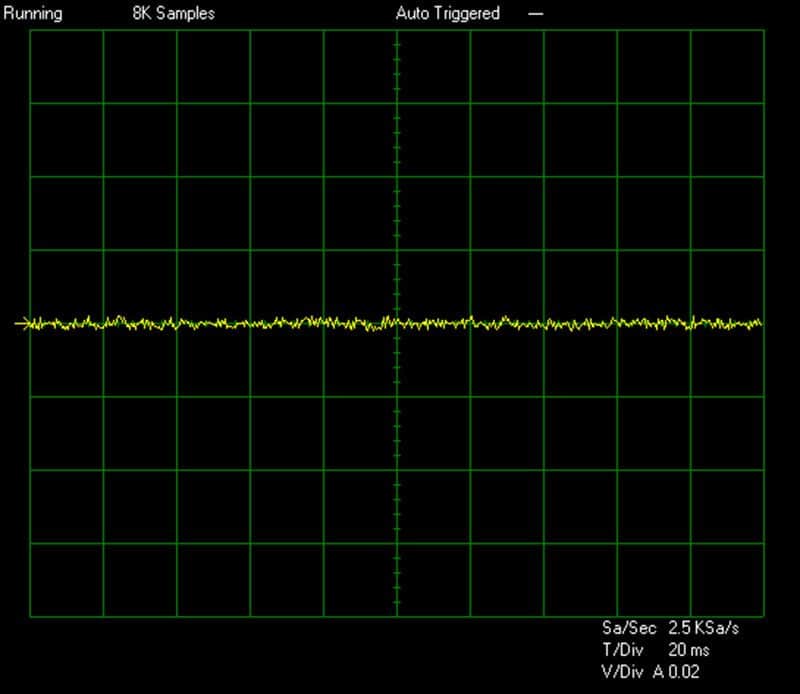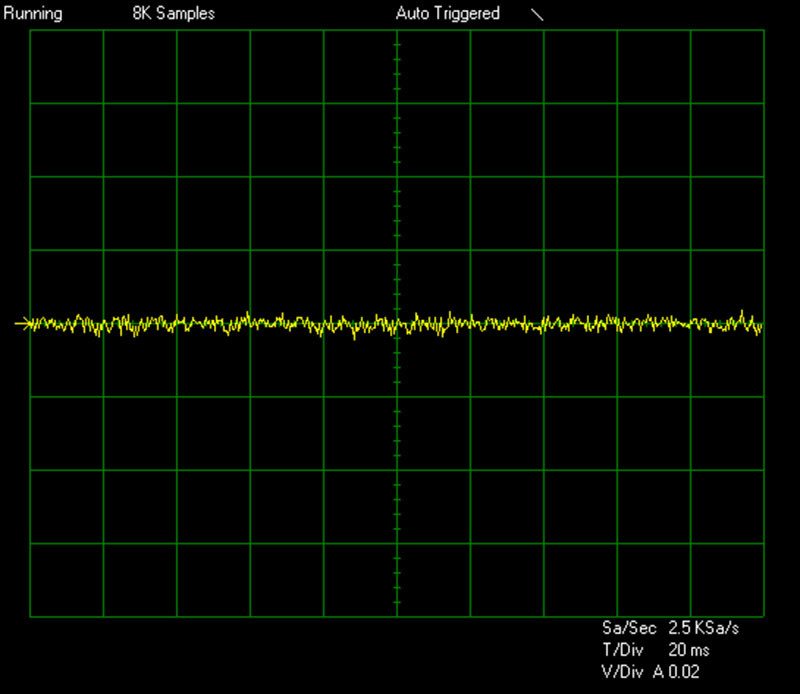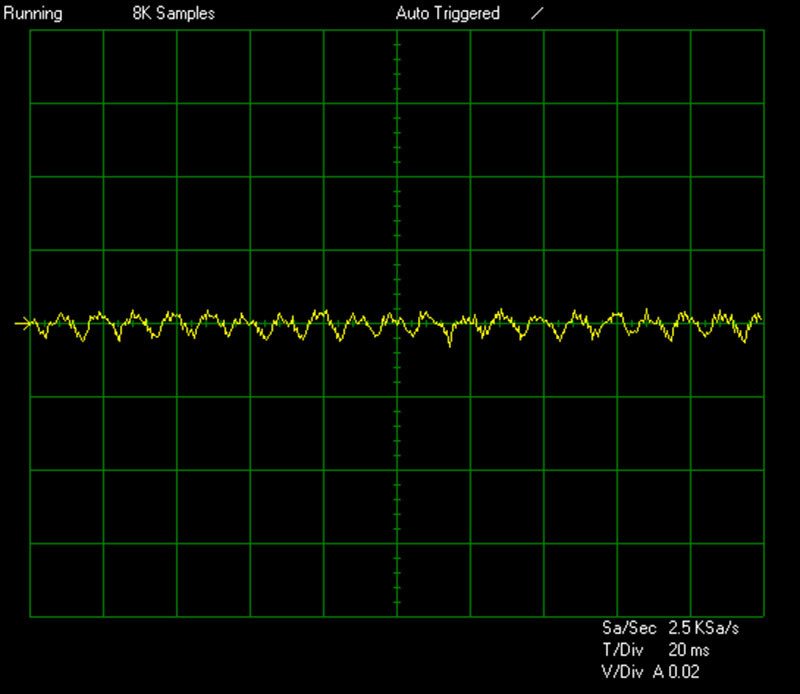Corsair RMi Series RM1000i Power Supply Review
Peter Donnell / 9 years ago
Ripple
Noise and Ripple can easily be measured by an oscilloscope. These show how much voltage fluctuation there is on a particular rail. We tested the rail stability of the 3.3 volt, 5 volt and 12 volt rails using an identical time and millivolt scale for all graphs. millivolt ripple is measured by the peak to peak size of the voltage curve.

Sample Ripple Graph
The latest ATX 12 volt version 2.3 specifications state that ripple from peak to peak must be no higher than 50 millivolts for the 3.3 volt and 5 volt rails, while the 12 volt rail is allowed up to 120 millivolts peak to peak to stay within specifications. Millivolt figures are stated to the closest increment of 5 given their variability.
| Load (%) | 3.3V Ripple | 5V Ripple | 12V Ripple |
| 20 | 3.4 | 4.4 | 4.2 |
| 40 | 3.4 | 4.2 | 5 |
| 60 | 4 | 5.2 | 5.8 |
| 80 | 4.2 | 7 | 7.8 |
| 100 | 5.6 | 9.2 | 11.2 |
Just like we saw with the RM650i, these test results are incredible! The ripple performance from the new Corsair PSUs is so good, we not only had to retest to make sure the ripple suppression was that good, we also had to check with Corsair that the results were correct; good news is, they were!
3.3 volt @ 100%

5 volt @ 100%

12 volt @ 100%




















